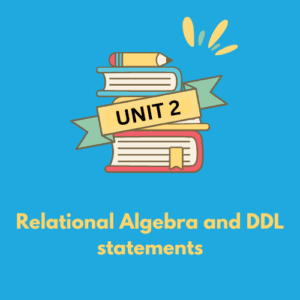
Click On the Download Button Below 
Introduction to Relational Algebra and DDL Statements :-
Relation Algebra is a procedural query language. It outlines a step-by-step procedure for obtaining the query’s result. It performs queries with the help of operators.
DDL commands are used to create schemas and tables and gives an overview of basic data types used in creating a database. SQL uses some terms such as table, row and column which are knows as relation, tuple and attribute respectively. The basic command is CREATE command. It can not only create table but also schemas, domains and views.
Objectives of Relational Algebra and DDL Statements :-
Objectives of Relational Algebra:
- Provide a formal framework for querying relational databases.
- Support operations like selection, projection, union, and join.
- Enable manipulation and transformation of data.
- Facilitate complex queries using set theory principles.
- Ensure consistency and correctness in database queries.
Objectives of DDL (Data Definition Language) Statements:
- Define and manage database structures (tables, schemas).
- Create, alter, and drop database objects (e.g., tables, indexes).
- Ensure database schema integrity through constraints.
- Control access to database structures (e.g., granting permissions).
- Set up relationships and enforce referential integrity.
Summary of Relational Algebra and DDL Statements :-
Relational Algebra:
- A formal query language for relational databases.
- Supports operations like selection, projection, union, and join.
- Enables data manipulation and transformation.
- Uses set theory to retrieve and modify data.
- Forms the basis for SQL queries.
DDL (Data Definition Language) Statements:
- Defines and manages database structures (e.g., tables, schemas).
- Includes commands like CREATE, ALTER, and DROP.
- Ensures integrity through constraints and relationships.
- Controls access to database objects (permissions).
- Responsible for setting up and modifying the database schema.
Database Systems Subject Link
